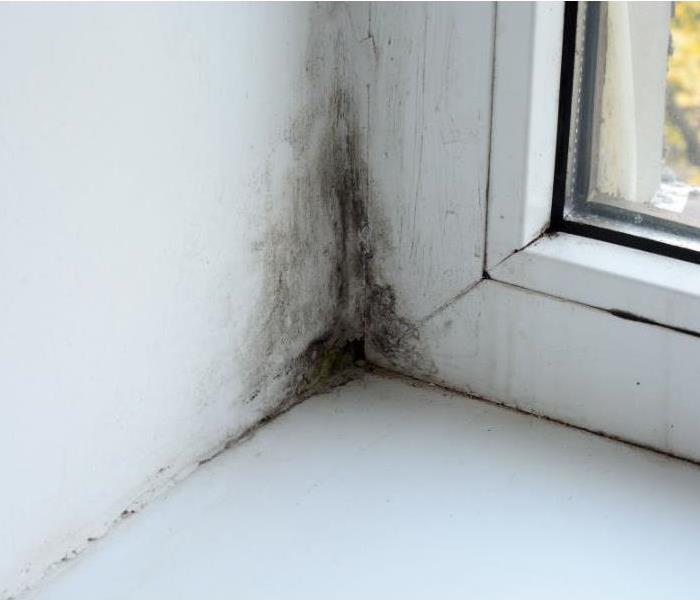How to Discover Mold
2/10/2020 (Permalink)
Like it or not, mold is an everyday part of our lives. It’s all around us.
Mold spores propagate very easily, and wherever there is a source of moisture in a house or commercial building, there is the potential for mold to grow. If left untreated, significant mold infestations can become serious health hazards, and the damage caused by mold can be astronomically expensive to repair.
SERVPRO of Littleton/Sheridan is your local resident expert in all things mold remediation, so we’re here to help with a few steps you can take to discover mold in your own home or office building.
Mold Identification
By identifying mold early, you can take the steps necessary to eliminate it before the problem gets out of hand.
The earliest signs of mold are small, black spots that appear in areas of higher-than-normal amounts of moisture. This early stage of mold growth is also referred to as mildew, and without prompt cleaning, mildew will continue to colonize as long as there is a source of moisture and as long as temperatures are within a 40-100° F.
On its own, mildew doesn’t present a serious health risk except for those who have sensitive allergies or a compromised respiratory system. It does, however, have a distinct odor that can often be detected before visual signs present themselves. This musky, pungent odor is often a sign that mold has taken root and it’s time to identify the source.
Distinguishing Mold from Dirt
Dirt accumulation can often be mistaken for mold. To determine if you’re dealing with a mold issue or if a surface is simply dirty, all you need is a little household bleach.
Using a cotton swab or liquid dropper, apply a small amount of bleach to the surface, and then wait a minute or two. Do not scrub or debride the area during this time.
If the area turns bright white very quickly, it’s likely that mold is there. If, however, there is no change in the coloration of the surface, it could simply be dirty. The reason this test works is because bleach kills mold spores on contact, whereas dirt is unaffected.
If you’re still uncertain whether you have mold or not, mold test kits are available at your local hardware store. While these kits can help you determine if you’re dealing with mold, they’re not going to identify the source; nor are they going to fix the underlying problem.
Surface Mildew vs. Mold-Induced Rot
Most mildewed surfaces can be scrubbed clean with a detergent that is specifically effective against mold (diluted bleach works well for this on surfaces that can handle it). However, when mold infiltrates subsurfaces and makes its way into drywall, studs, or other structural areas, rot is the inevitable outcome.
If mold-induced rot has advanced to the point of affecting these areas, the symptoms are immediately apparent once the exterior surface is penetrated.
To check for mold-induced rot, use a screwdriver to probe the area. Soft, crumbling wood is a telltale sign that the mold fungus has established itself and that the rotting process is well underway.
Locating the Root Cause of Rot
Modern plumbing makes homes liveable. We often take for granted the seemingly unending water supply that is at our fingertips through the spigots and faucets located throughout our homes.
However, leaks in the pipes that carry our water are often the culprits for mold-induced rot. This is why it’s important to check for plumbing leaks if you think you might have a mold issue.
To do this, check the inlets and outlets of all water-using appliances in your home or commercial building. Be sure to include inspections of your washing machine, dishwasher, ice maker, evaporative cooler, and any other appliance that uses water to perform its function.
Even a small leak that only produces a few drops of water every day can be all that is needed for a serious mold problem to materialize.
If you are able to locate plumbing leaks, fix them sooner than later.
Remember that the second most significant source of moisture in a building comes from outside. So, after inspecting all of your plumbing for leaks, check vents, deck flashing, window wells, and any other interior area that butts up against an exterior area.
Is Your Mold Problem out of Hand? Contact SERVPRO
Most cases of mildew can be easily addressed using household cleaners. However, when mold growth affects structural areas of the home, more extensive work is needed to restore the area.
To schedule an on-site inspection with a qualified SERVPRO mold remediation expert, contact us today.

 24/7 Emergency Service
24/7 Emergency Service
